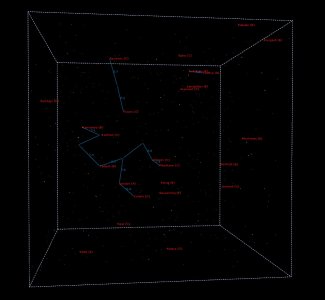I recently started building a CT subsector in Astrosynthesis just for fun - no campaign on the horizon yet.

Randomly-generated stars, 50ly cube.
Given average stellar separation is about 7.7ly, that's what I use as Jump-1. (I find that to achieve this in Astrosynthesis, I need to generate the sector on minimum stellar density, and then expand it by a factor of 1.1 using a plugin; so I actually generated a 45ly cube.) I use an exponentially-declining scale for higher jumps to stop people being able to jump right out of the subsector too easily.
I did a search through the sector for worlds with certain characteristics of gravity and temperature, and that gave me about 30, which is roughly right for a subsector.
The blue lines are CT'77 "jump lanes". Letters in brackets after the world names are starport codes.
One thing I like about this setup is the "points of light" nature. To make a Jump-1 trip, you have to go through a number of "link" systems. Smallish gas giants in the link systems, that a 1G M-drive free trader can use to scoop fuel, will be natural pirate hangouts, unless the sector is heavily policed. Which obviously it won't be!

Randomly-generated stars, 50ly cube.
Given average stellar separation is about 7.7ly, that's what I use as Jump-1. (I find that to achieve this in Astrosynthesis, I need to generate the sector on minimum stellar density, and then expand it by a factor of 1.1 using a plugin; so I actually generated a 45ly cube.) I use an exponentially-declining scale for higher jumps to stop people being able to jump right out of the subsector too easily.
I did a search through the sector for worlds with certain characteristics of gravity and temperature, and that gave me about 30, which is roughly right for a subsector.
The blue lines are CT'77 "jump lanes". Letters in brackets after the world names are starport codes.
One thing I like about this setup is the "points of light" nature. To make a Jump-1 trip, you have to go through a number of "link" systems. Smallish gas giants in the link systems, that a 1G M-drive free trader can use to scoop fuel, will be natural pirate hangouts, unless the sector is heavily policed. Which obviously it won't be!
